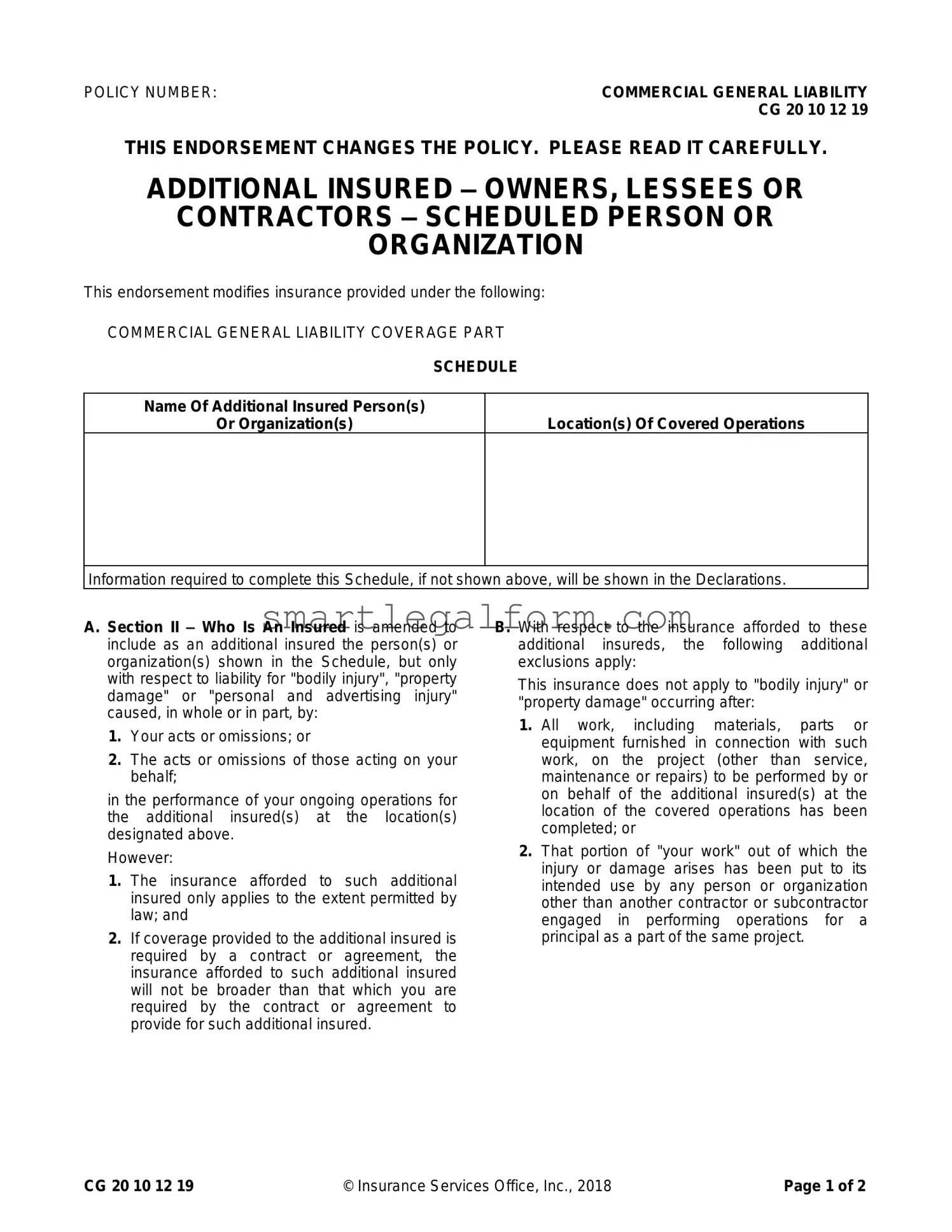Filling out the CG 20 10 07 04 Liability Endorsement form can be a straightforward task, but many individuals make common mistakes that can lead to complications down the line. One frequent error is neglecting to provide accurate information regarding the additional insured. This section requires specific names and details of the persons or organizations that will be covered. Omitting or misnaming these parties can result in a lack of coverage when it is most needed.
Another mistake often encountered is failing to specify the location(s) of covered operations. This detail is crucial because it defines where the coverage applies. If the locations are not clearly outlined, it may create confusion about the scope of the insurance, potentially leaving certain operations unprotected. Always double-check that the locations are complete and accurate.
People also frequently overlook the importance of understanding the contractual obligations tied to the endorsement. If the coverage for the additional insured is mandated by a contract, the insurance provided cannot exceed what is stipulated in that agreement. Ignoring this can lead to misunderstandings about the extent of coverage, which could leave both parties exposed in the event of a claim.
Another common pitfall is misunderstanding the limitations of the coverage. The endorsement explicitly states that the insurance does not apply to "bodily injury" or "property damage" occurring after certain conditions are met, such as the completion of work. Failing to recognize these exclusions can result in unexpected gaps in coverage, which can be detrimental when claims arise.
In addition, individuals often rush through the form without thoroughly reviewing the limits of insurance section. This section clarifies that the maximum payout for the additional insured will be the lesser of the contract requirements or the available insurance limits. Misinterpreting this can lead to unrealistic expectations about the coverage provided, which may not align with actual policy limits.
Finally, many people neglect to sign and date the endorsement. While it may seem like a minor detail, an unsigned form can render the endorsement invalid. Always ensure that all necessary signatures are included to avoid any administrative issues that could complicate claims processing in the future.

